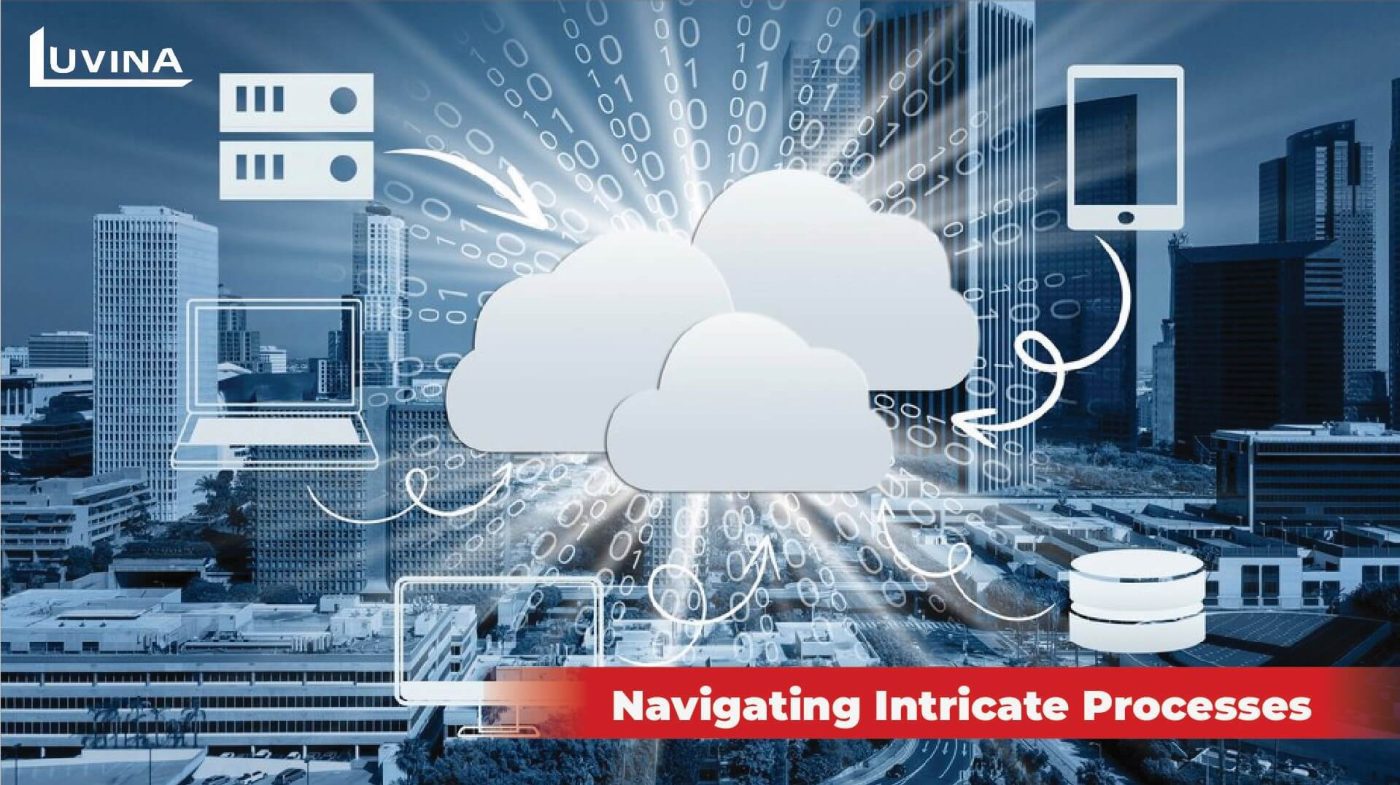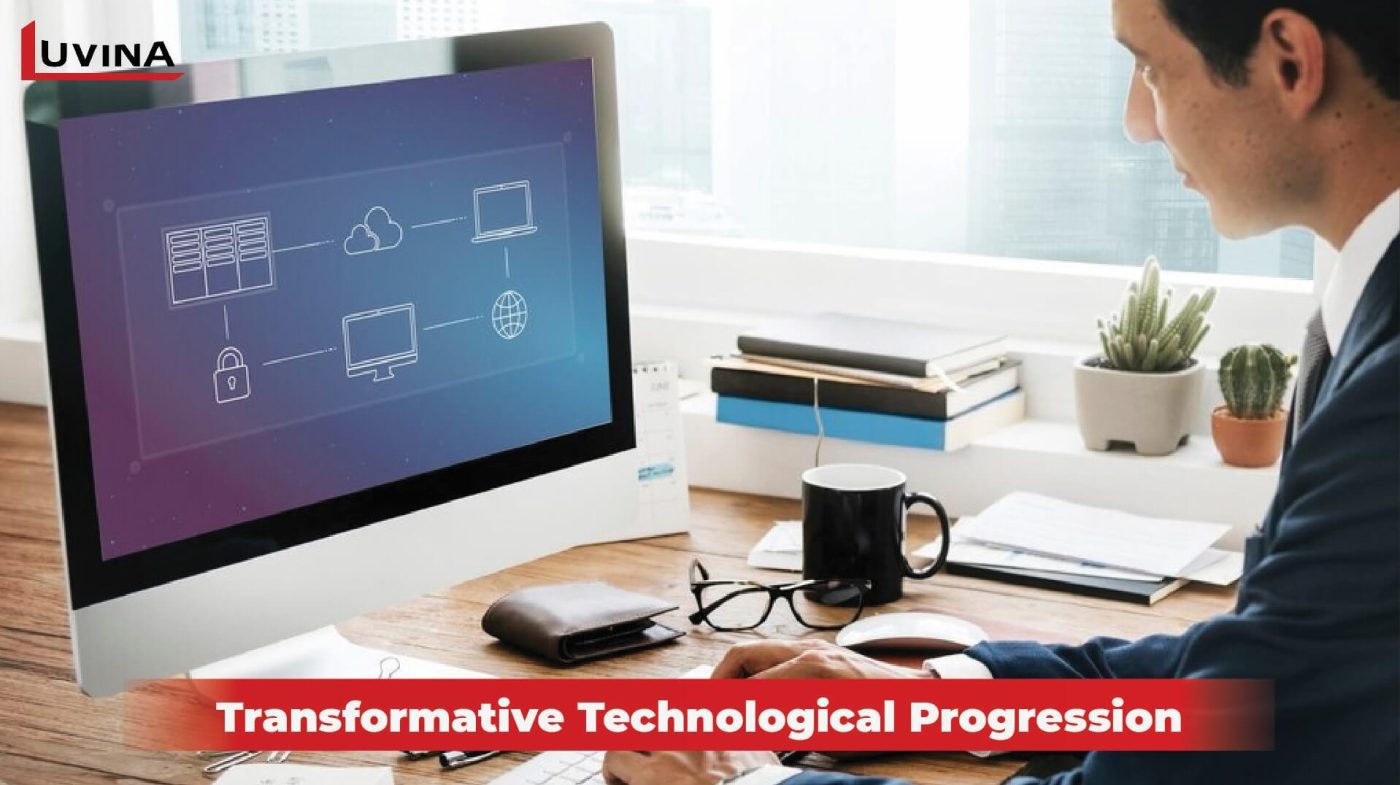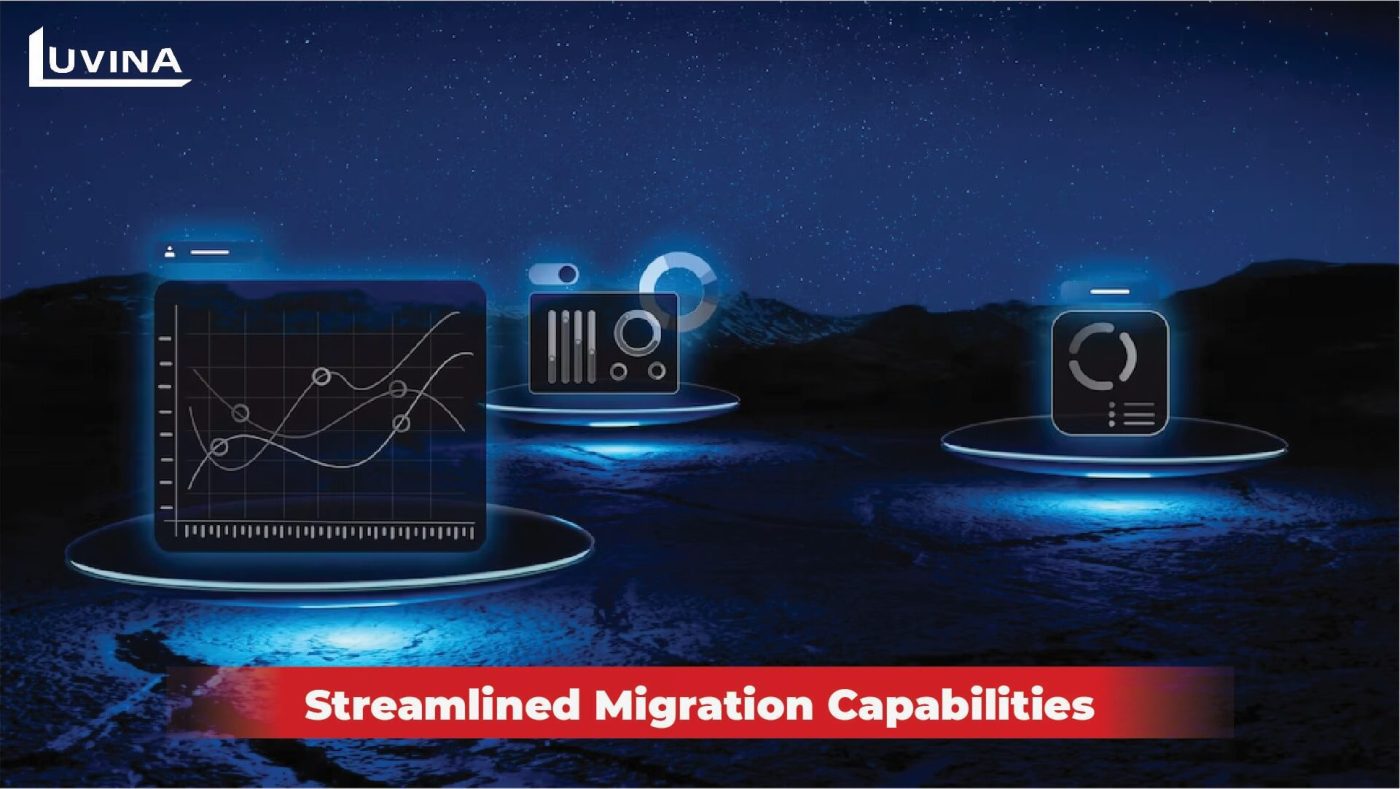Data migration software is the linchpin of modern enterprise transitions. Discover how these tools streamline and secure data transfers across systems for seamless operations. Explore the array of solutions tailored to diverse migration needs in today’s dynamic business landscape.
What is Data migration?
In brief, data migration is the process of moving digital data from one storage location to another, typically from legacy platforms to cutting-edge systems such as the Cloud. This process also involves transferring data file format, environments and applications.
In today’s fast pace of digital transformation, Data Migration has been of increasing prevalence as a way to enhance the efficiency, scalability and flexibility of every business. It is often a result of introducing new systems and up-to-the-minute processes in an organization.
Types of data migration
Data migration can be classified into 5 major types:
Storage Migration
One of the primary types of Migration, Storage migration refers to moving data from one storage system to a modern storage device. This might include changes from one drive to a solid-state drive or even from one cloud provider to another partner.
Storage Migration would be most optimal for businesses in need of upgrading their infrastructure for swift workflow without investments in expansion.
Database Migration
Database Migration is the process of moving the entire sources of data to new state-of-the-art systems. Since a considerable amount of data is transited and might be transferred in format to accommodate new architectures, the process is quite sophisticated compared to others, requiring more perpetual endeavors and specialized expertises.
Application Migration
An application migration consists of moving current application programs from one computing environment to another. In some ways, application migration can be deemed as the combination of both storage migration and database migration, inheriting the majority of features in procedures from those two.
When the business has to make adjustments in the software they use, in their software provider, or platforms, this is when application migration comes about and exerts most desirable impacts.
Cloud Migration
Cloud Migration is a sought-after solution for several businesses in this rapidly evolving marketplace. It includes transiting the majority of elements such as data, application or even infrastructure from an on-premises data center to a cloud system.
Cloud Migration has been proved to be a potent tool to leverage business profits and seamless processes as it helps store, analyze data and applications effectively.
Business Process Migration
In case businesses want to optimize and restructure their operations, Business Process Migration might be an excellent option for them. Business Process Migration refers to the transition of data, applications or other elements with a view to better management and optimized operational techniques.
Understanding Data Migration Challenges
Data migration, while pivotal, is not without its challenges, encompassing various complexities:
1. Data Transfer Complexities
The process involves transferring vast volumes of data between systems, which often leads to intricate processes. Large-scale data transfers require meticulous planning and execution to avoid errors or interruptions.

2. Risk and Complexity
The inherent risks in data migration include the potential for data loss, integrity issues, or compatibility conflicts. These challenges intensify as the volume and complexity of data increase. Managing these risks necessitates comprehensive strategies and precise execution to ensure a seamless transition.
Addressing these challenges demands a deep understanding of the intricacies involved in data migration processes to mitigate potential setbacks effectively.
The Evolution of Data Migration
The evolution of data migration traces a compelling journey through technological advancements and innovation:
Initially, data migration involved manual processes, prone to errors and time-consuming tasks. With technological advancements, software solutions emerged to streamline these operations, reducing manual intervention and enhancing efficiency.

The evolution of data migration witnessed transformative stages, from basic tools for simple data transfers to comprehensive suites designed for complex migrations. These advancements revolutionized how data is moved, transformed, and managed across diverse systems and platforms.
Understanding the historical progression and technological innovations within data migration provides insights into the current state of the industry, showcasing the journey from rudimentary tools to sophisticated, automated solutions.
Key Features and Functionalities
Data migration stands as a comprehensive solution offering a multitude of essential features and functionalities crucial for facilitating smooth and secure data transfers across diverse platforms and systems. These solutions are built upon a rich array of tools specifically designed to streamline and automate intricate data migration tasks. Among the core functionalities, these software solutions often boast user-friendly interfaces, simplifying complex migration processes for users with varying technical expertise.
- Robust automation: Central to their capabilities are robust automation features that efficiently handle the movement of vast volumes of data. Automated workflows, transformation rules, and scheduling functionalities streamline the migration process, minimizing manual intervention and reducing the likelihood of errors. Additionally, intelligent mapping tools ensure accurate and precise data transfer, facilitating seamless integration between different databases, applications, or cloud environments.

- Security: Moreover, data migration prioritizes security as a fundamental aspect of its offerings. Advanced encryption protocols, data validation mechanisms, and stringent access controls are embedded within these solutions to safeguard sensitive information during transit. Comprehensive audit trails provide visibility into the entire migration process, ensuring compliance and traceability.
- Report: In addition to these core functionalities, these solutions typically include reporting features that furnish users with detailed insights into the status and success of each migration task. This empowers stakeholders with critical information to make informed decisions and adjust strategies as needed throughout the migration process.
In essence, the amalgamation of user-friendly interfaces, robust automation, stringent security measures, and comprehensive reporting functionalities encapsulates the core strengths of data migration, laying a solid foundation for executing large-scale data transfers while prioritizing accuracy, efficiency, and security.
Best Practices for Utilizing Data Migration
Effective utilization of data migration necessitates adherence to a set of best practices that span the entire lifecycle of a migration project.
Carefully planning
Beginning with meticulous planning, it’s crucial to conduct a comprehensive assessment of the existing data landscape. This involves cataloging data sources, understanding their formats, and identifying dependencies, which ultimately informs a well-thought-out migration strategy.

Dividing the process into clear steps
A phased approach to migration is often recommended, especially for complex datasets or mission-critical systems. Segmenting the migration process into smaller, manageable phases allows for better control, reduces the risk of disruptions, and enables more accurate testing and validation at each stage.
Regular examination and validation
Additionally, effective execution of a data migration project requires continuous monitoring and validation of the migration process. Rigorous testing and validation procedures, including mock migrations and dry runs, help identify and rectify any issues or inconsistencies before the actual data transfer occurs. Implementing comprehensive rollback plans in case of unforeseen challenges ensures the ability to revert to previous states without data loss.
Nurturing mutual understanding and communication
Furthermore, fostering collaboration and communication among all stakeholders involved in the migration process is fundamental. Clearly defined roles and responsibilities, regular checkpoints, and transparent communication channels facilitate a cohesive approach and help mitigate misunderstandings or delays.
Post-migration monitor
Lastly, ongoing post-migration validation and performance monitoring are critical. Continuous monitoring of the migrated data ensures its integrity, completeness, and accuracy in the new environment. Establishing performance benchmarks and conducting periodic assessments help optimize the migrated system’s performance over time.
Adhering to these best practices significantly enhances the chances of a successful data migration project and maximizes the value derived from data migration, ultimately leading to improved operational efficiency and business outcomes.
>> Also read: 11 Steps to Excel Data Migration from Legacy Systems
Future Trends and Innovations in Data Migration
The landscape of data migration technology continues to evolve, driven by the need for more efficient, secure, and agile solutions. Several trends and innovations are shaping the future of data migration.
- AI/ML: One prominent trend revolves around the integration of artificial intelligence (AI) and machine learning (ML) capabilities within data migration tools. These technologies offer predictive analytics, intelligent mapping, and automated decision-making, enabling more accurate data transformation and mapping processes. AI-driven data profiling and cleansing are poised to become pivotal in ensuring data quality before and after migration.
- Process Automation: Another significant advancement lies in the realm of automation. Continuous improvements in automation, especially robotic process automation (RPA) and intelligent process automation (IPA), are streamlining complex migration tasks. Automated data validation, schema mapping, and data lineage tracking significantly reduce manual efforts and human error, leading to more efficient and error-free migration processes.
- Cloud-native: Furthermore, the integration of cloud-native capabilities within data migration is gaining prominence. Tools that seamlessly integrate with cloud platforms offer scalability, flexibility, and cost-effectiveness. The ability to handle massive volumes of data while maintaining data integrity during migration processes is becoming a critical requirement for modern data migration solutions.
- Data migration security: Data migration security is also undergoing substantial advancements. With data privacy and compliance regulations becoming more stringent, advanced encryption, anonymization techniques, and robust data governance features are being incorporated into migration software to ensure data security and compliance with regulatory standards.
Looking ahead, the future of data migration technology appears to be centered around a combination of intelligent automation, enhanced cloud integration, heightened security measures, and a continued focus on data quality. As organizations continue to embrace digital transformation, these innovations will play a pivotal role in shaping the efficiency and effectiveness of data migration processes.
Seamless Migration Process
Risk Mitigation & Data Security
Post-Migration Support & Optimization

Conclusion
In conclusion, data migration stands as a fundamental pillar in modern data management, offering enhanced efficiency, security, and agility in transferring data. Embracing these advanced tools ensures smoother data transitions, enabling organizations to harness the full potential of their data assets. For robust and seamless data management solutions, consider partnering with experts at Luvina.








Read More From Us?
Sign up for our newsletter
Read More From Us?
Sign up for our newsletter